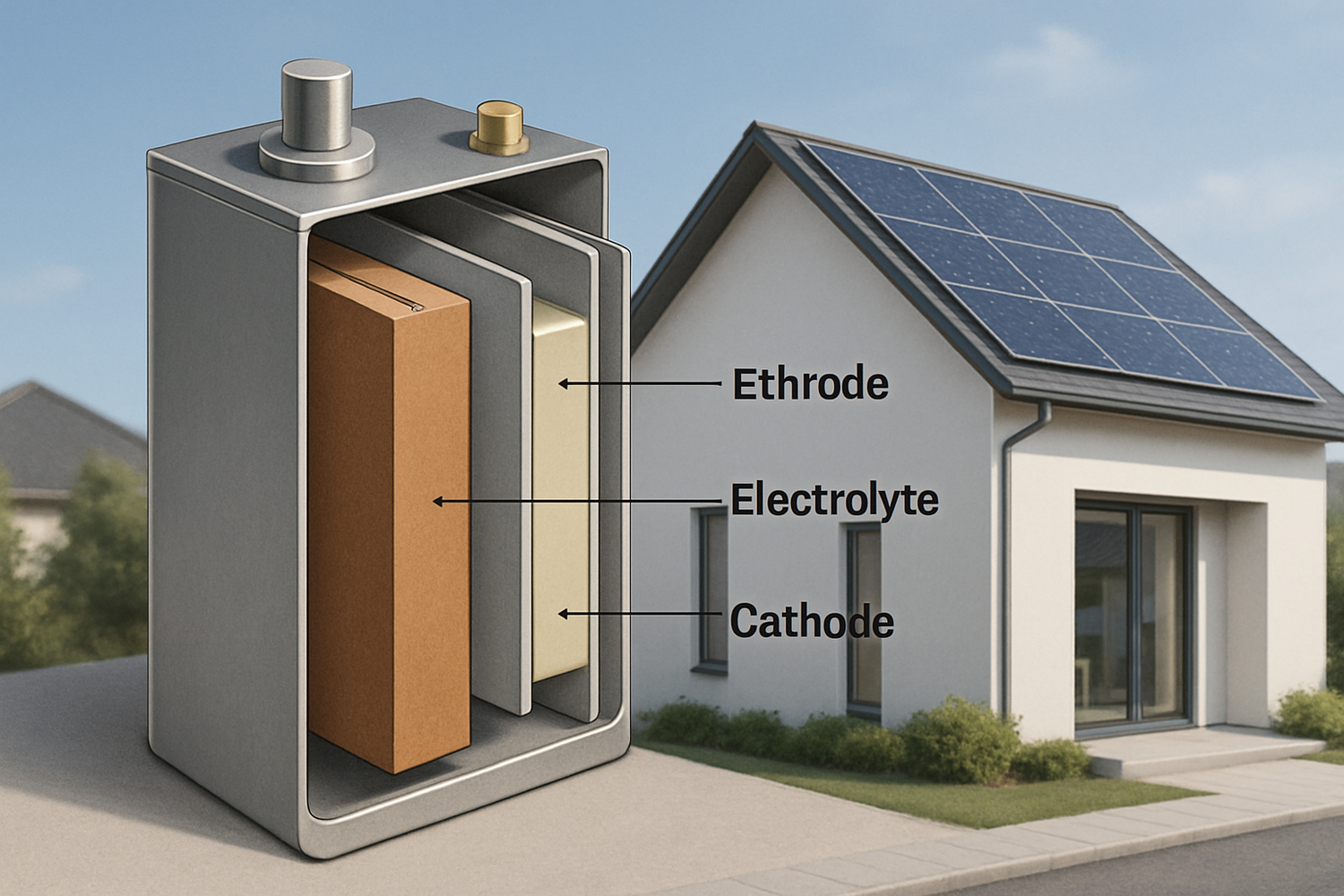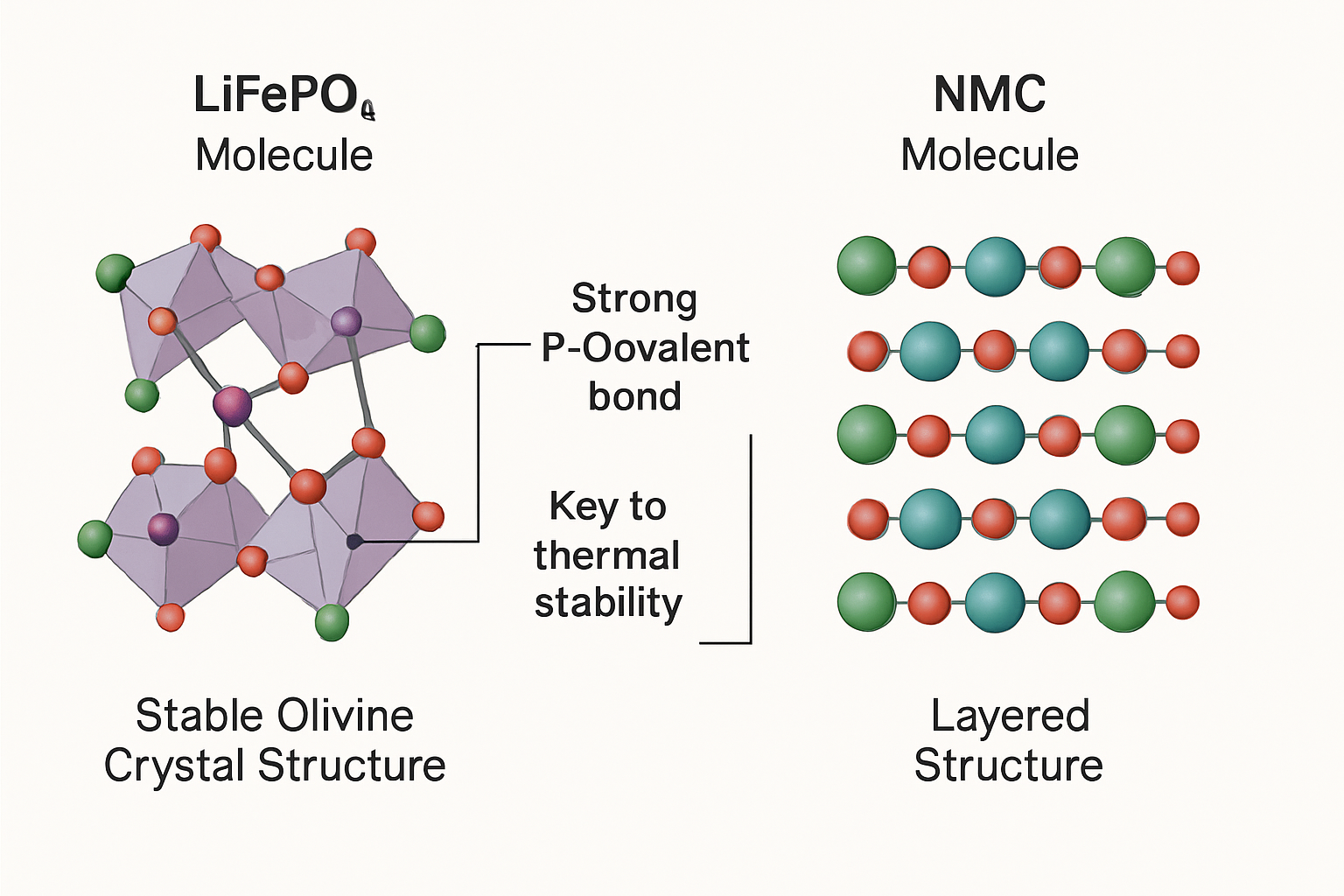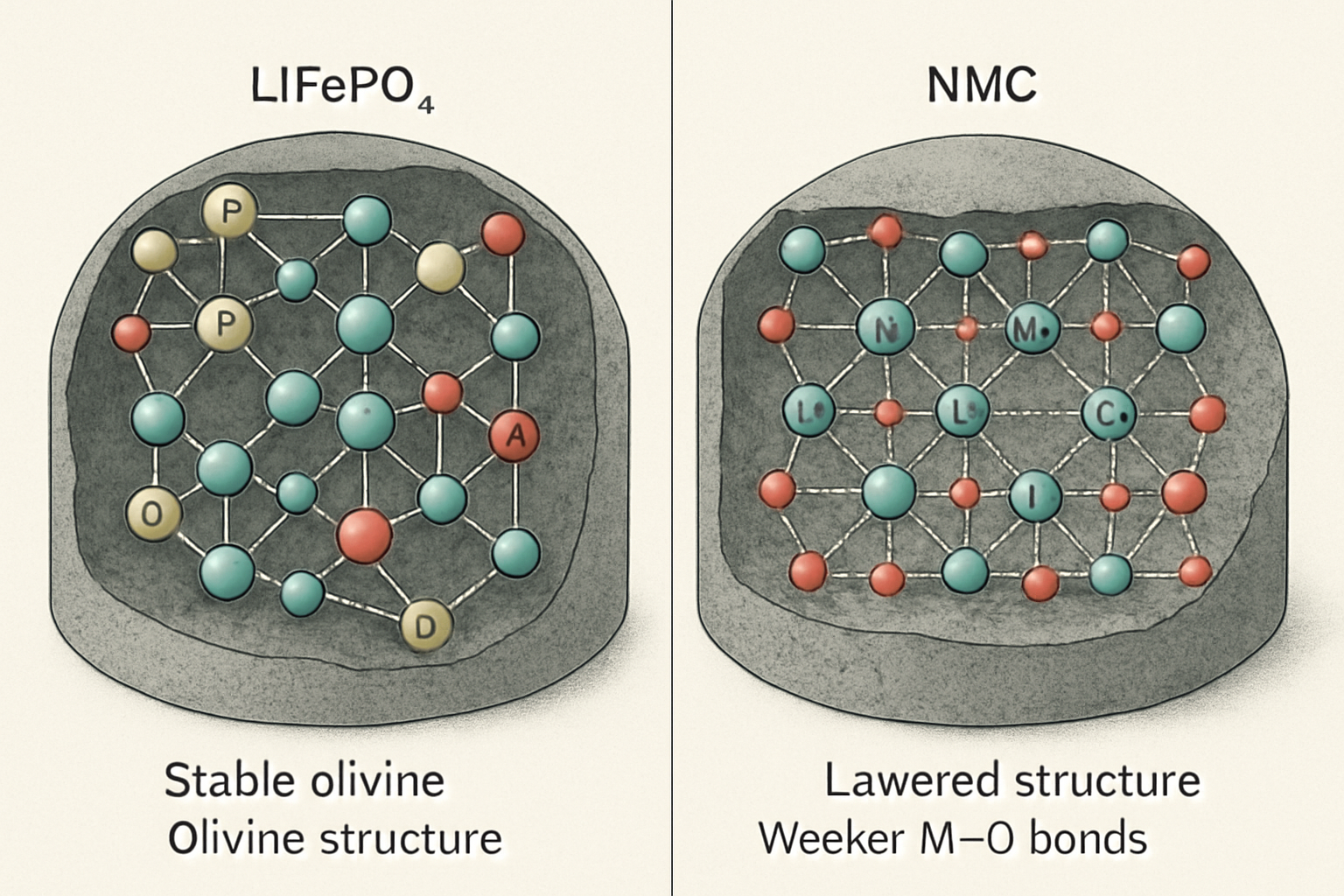Selecting the right battery is a critical decision for any solar energy system. It determines not only how much energy you can store but also the safety, longevity, and overall value of your investment. While various lithium-ion batteries are available, Lithium Iron Phosphate (LiFePO4) chemistry has emerged as the leading choice for residential and commercial solar applications. This preference is built on a foundation of superior safety, extended lifespan, and performance characteristics perfectly suited for daily energy cycling.
The Foundation of Safety: Chemical and Structural Stability
The primary reason LiFePO4 is favored for energy storage is its inherent safety, which originates at a molecular level. Unlike other lithium-ion chemistries that use cobalt, LiFePO4 technology is built on a more stable and robust structure.
A Look Inside the LiFePO4 Crystal Structure
The chemistry of a LiFePO4 battery relies on a phosphate-based cathode. The phosphorus-oxygen bonds within the phosphate crystal are exceptionally strong. This robust bond makes the structure highly resistant to breaking down and releasing oxygen, even under high temperatures or stress. In contrast, conventional lithium-ion batteries often use metal oxides like Nickel Manganese Cobalt (NMC), which can release oxygen more readily when compromised, creating a significant fire risk.
High Thermal Runaway Threshold
Thermal runaway is a dangerous chain reaction where a battery cell overheats, causing a rapid, uncontrolled release of energy. For many lithium-ion chemistries, this process can begin at temperatures as low as 150°C (302°F). LiFePO4 batteries have a much higher thermal runaway threshold, typically around 270°C (518°F). This wider safety margin means a 12V 100Ah LiFePO4 lithium battery is far less likely to overheat and enter thermal runaway, providing crucial protection for a home battery storage system.
Cobalt-Free Chemistry: An Ethical and Stable Choice
LiFePO4 batteries do not contain cobalt, a material often associated with unethical mining practices and supply chain volatility. Choosing a cobalt-free lithium phosphate battery not only supports more responsible sourcing but also contributes to price stability. Iron and phosphate are abundant and less expensive materials, making the technology a more sustainable and economically sound long-term option.
Performance Tailored for Solar Applications
A solar energy storage system requires a battery that can handle the demands of daily charging and discharging for years. LiFePO4 technology is uniquely equipped for this task, offering superior longevity and efficiency that directly translate to better long-term value.
Exceptional Cycle Life and Longevity
A battery's cycle life is the number of full charge and discharge cycles it can endure before its capacity degrades significantly. A deep cycle lithium battery based on LiFePO4 chemistry can typically deliver between 3,000 and 10,000 cycles. This far surpasses other lithium-ion types, which may only offer 500 to 1,500 cycles. This durability is why LiFePO4 is the standard for high-use applications. As the International Renewable Energy Agency (IRENA) notes, the market shift to LFP is driven by its 'lower costs, higher cycle life, and better security'. This extended lifespan makes a 100 ah lithium battery with LiFePO4 chemistry a more cost-effective solution over the life of the system.
| Feature | LiFePO4 Battery | NMC/LCO Lithium-Ion Battery |
|---|---|---|
| Typical Cycle Life | 3,000 - 10,000+ Cycles | 500 - 1,500 Cycles |
| Thermal Runaway Threshold | ~270°C (518°F) | ~150-210°C (302-410°F) |
| Nominal Cell Voltage | 3.2V | 3.6V / 3.7V |
| Cobalt Content | None | Yes |
| Safety Profile | Excellent | Good (Requires complex BMS) |
Consistent Power Delivery
LiFePO4 batteries maintain a very flat voltage discharge curve. This means they deliver nearly full power even as they are being depleted. Whether your 12 volt lithium ion battery is at 90% or 30% capacity, the connected appliances receive consistent and stable voltage. This is particularly important for protecting sensitive electronics from power fluctuations, ensuring your solar energy storage system operates smoothly.
High Efficiency for Maximum Solar Utilization
The round-trip efficiency of a battery measures how much energy is returned during discharge compared to the amount put in during charging. LiFePO4 batteries boast a high round-trip efficiency, often exceeding 95%. This minimizes energy loss, ensuring that the maximum amount of solar power you generate is stored and available for use. Understanding these metrics is key, and you can find a deeper explanation in the ultimate reference on solar storage performance, which details how efficiency impacts your system's output.
Practical Advantages in Real-World Scenarios
Beyond safety and performance, LiFePO4 batteries offer practical benefits that simplify ownership and enhance reliability. The International Energy Agency (IEA) highlights that LFP chemistry is 'already dominating energy storage deployment due to its lower cost and longer cycle life,' underscoring its real-world advantages.
Tolerance for a Wide Range of Conditions
LiFePO4 batteries can operate effectively across a broader temperature range than many other battery types. They are also more resilient to deep discharging without sustaining significant damage. This robustness makes them a reliable choice for energy storage solutions in various climates and for off-grid solar applications where usage patterns can be unpredictable.
Maintenance-Free Operation
Unlike traditional lead-acid batteries that require regular checks and maintenance, a lithium battery pack with LiFePO4 cells is virtually maintenance-free. A well-designed system with an integrated Battery Management System (BMS) manages cell health automatically. This 'set it and forget it' quality is a major benefit for homeowners looking for a simple and dependable energy solution.
Environmental and Disposal Considerations
The materials used in LiFePO4 batteries—iron and phosphate—are more common and less toxic than the heavy metals found in other batteries, such as cobalt and nickel. This composition simplifies recycling processes and reduces the overall environmental footprint of the battery, aligning with the sustainable goals of solar energy.
A Clearer Perspective on Your Energy Investment
When you choose a battery for your solar system, you are investing in your energy independence for years to come. The decision goes beyond initial cost to include safety, lifespan, and reliable performance. LiFePO4 technology provides a compelling combination of all three. Its chemically stable and cobalt-free design offers peace of mind, while its exceptional cycle life ensures long-term value. For anyone serious about building a durable and efficient solar energy storage system, LiFePO4 stands out as the intelligent and responsible choice.
Frequently Asked Questions
Are LiFePO4 batteries more expensive upfront?
The initial purchase price of a LiFePO4 battery, such as a 12v 100ah lithium ion battery, can be higher than other types. However, its true value is revealed in its total cost of ownership. Because of its significantly longer cycle life, a single LiFePO4 battery can outlast multiple sets of other batteries. This durability, combined with its higher efficiency and maintenance-free operation, often results in a lower overall cost over the system's lifespan.
How does LiFePO4 compare to other lithium-ion batteries like NMC?
The main difference is a trade-off between energy density and safety. NMC batteries have a higher energy density, meaning they can be smaller and lighter for the same capacity. This makes them well-suited for portable electronics and electric vehicles where space and weight are primary concerns. LiFePO4 prioritizes safety, long life, and thermal stability over energy density, making it the superior and safer choice for stationary applications like a home battery storage system where those factors are more critical.
Can I use any LiFePO4 battery for my solar system?
It is crucial to use a high-quality lithium battery storage solution that includes an integrated Battery Management System (BMS). The BMS is the brain of the battery, protecting the cells from overcharging, over-discharging, short circuits, and extreme temperatures. A proper BMS ensures the safety, longevity, and optimal performance of the entire lithium battery pack, whether it's a single 12v 50ah lithium battery or a large 48v LiFePO4 battery bank.





Leave a comment
All comments are moderated before being published.
This site is protected by hCaptcha and the hCaptcha Privacy Policy and Terms of Service apply.